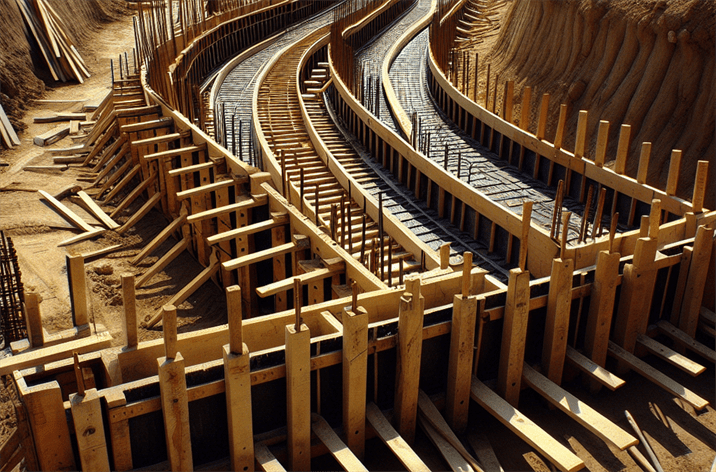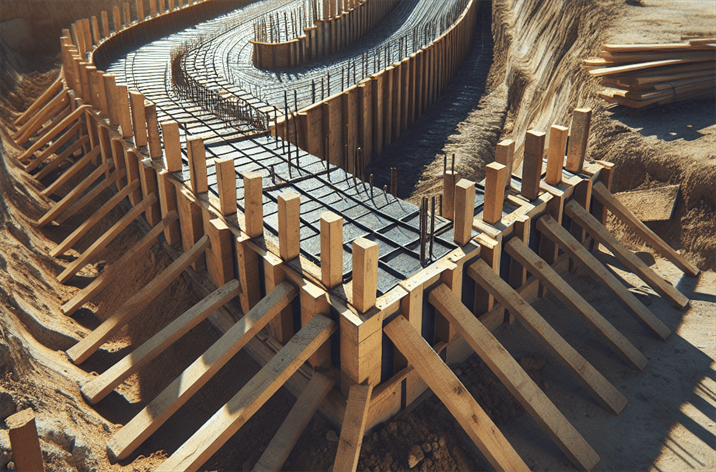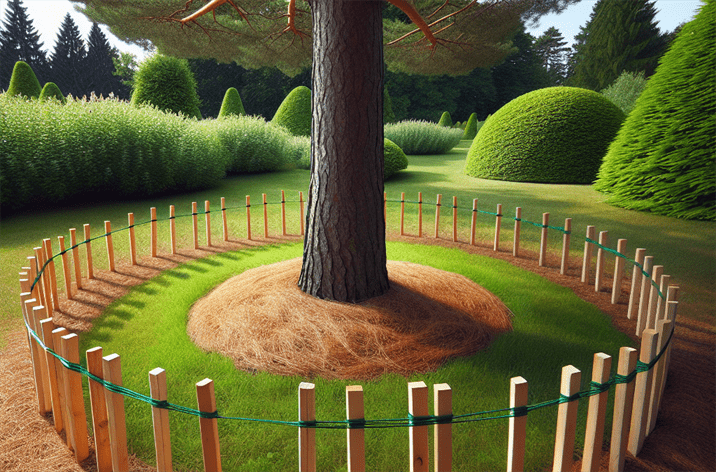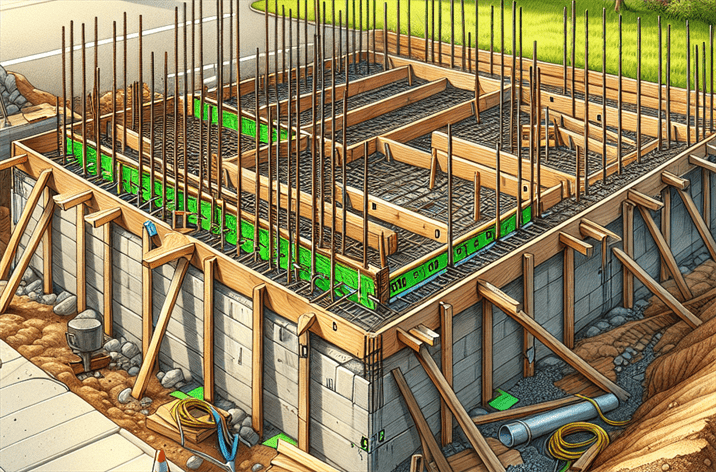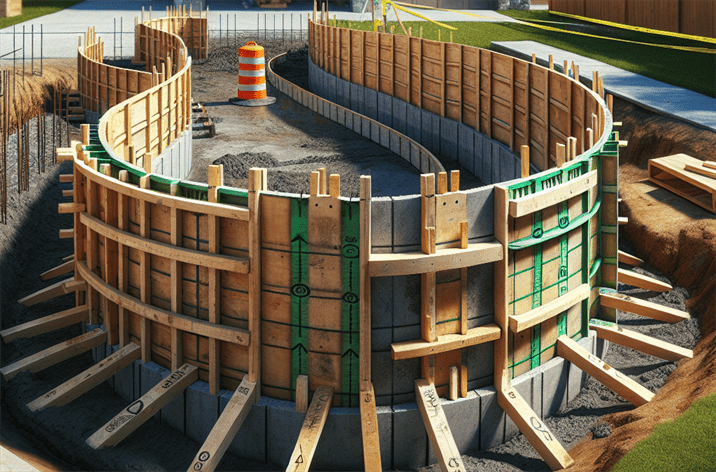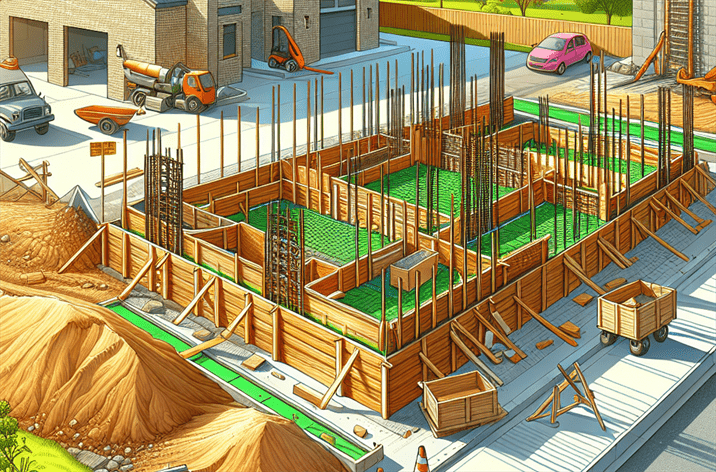The Comprehensive Guide to Wooden Boundary Markers
Introduction
Have you ever wandered through a forest or a sprawling field and marveled at the precise boundaries defined by wooden markers? These unassuming yet vital tools are known as Wooden Boundary Markers, and they play a crucial role in both construction and land management. In a world where precision and clarity are paramount, understanding the significance of these markers can enhance your projects, whether you’re a homeowner, contractor, or landscaper.
The rising trend of sustainable construction practices has led to a renewed interest in wooden materials, including boundary markers. Recent studies highlight that wooden markers are not only eco-friendly but also provide a cost-effective solution for demarcating property lines and guiding construction projects. The combination of durability and aesthetic appeal makes them an excellent choice over synthetic alternatives.
In this article, we will delve deep into the world of Wooden Boundary Markers. We’ll explore their definition, historical context, functionality, benefits, and much more. By the end, you’ll have a comprehensive understanding of how these markers can enhance your projects while remaining aligned with sustainable practices.
What is Wooden Boundary Markers?
Definition
Wooden Boundary Markers are physical indicators used to delineate property lines or specific areas of land. Typically made from treated wood to withstand the elements, these markers serve as a reliable guide for construction and landscaping projects. They come in various forms, sizes, and styles, depending on the requirements of the project or the preferences of the user.
Historical Context
The use of boundary markers dates back centuries, with early civilizations employing natural materials like stone and wood to define property lines. Over time, as land ownership and agriculture evolved, so did the design and implementation of these markers.
In the 19th century, wooden markers became widely adopted in the United States, particularly in rural areas. Land surveyors utilized them to mark boundaries accurately, ensuring that land disputes were minimized. Today, advancements in wood treatment and preservation techniques have further enhanced the durability and aesthetics of Wooden Boundary Markers, making them a preferred choice in both residential and commercial projects.
Importance of Wooden Boundary Markers
The relevance of Wooden Boundary Markers has surged in recent years, driven by a growing awareness of environmental sustainability and the need for precise land management. Their ability to blend seamlessly into natural landscapes while providing a clear demarcation makes them indispensable in various contexts.
Wooden Boundary Markers in the context of construction
In the construction industry, these markers are crucial for project layout and management. They help in defining work zones, aligning structures, and ensuring compliance with zoning laws. For detailed insights on the role of construction markers, check out our article on construction boundary markers and their role in defining property lines.
Key players or contributors
Several organizations and manufacturers have pioneered the use of Wooden Boundary Markers, advocating for their benefits and pushing for innovations in sustainable materials. Noteworthy contributions come from companies specializing in eco-friendly construction supplies, which have championed the use of treated wood to enhance longevity while minimizing environmental impact.

How Does Wooden Boundary Markers Work?
The Mechanics of Wooden Boundary Markers
Wooden Boundary Markers work by providing visible and tangible indicators that signify property lines or designated areas. The installation process typically involves:
- Site Surveying: Before placing the markers, a surveyor will assess the land to determine the exact boundaries.
- Marker Placement: Wooden markers are then installed at specified intervals along the boundary lines. They can be driven into the ground or set in concrete for added stability.
- Regular Maintenance: Depending on exposure to the elements, these markers may require periodic checks and maintenance to ensure visibility and structural integrity.
Technological Foundations of Wooden Boundary Markers
While the concept of boundary marking is straightforward, advancements in technology have enhanced the accuracy and effectiveness of the process. Modern surveying tools, such as GPS and laser scanning, are often integrated with traditional methods to ensure precise positioning of the Wooden Boundary Markers.
For instance, using GPS technology allows surveyors to pinpoint exact locations, which helps in minimizing errors during installation. You can learn more about the tools that facilitate accurate land surveying in our guide to surveying equipment supplies.
Real-World Applications of Wooden Boundary Markers
Wooden Boundary Markers find applications in various fields, including:
- Construction: They serve as guides for laying foundations and erecting structures.
- Agriculture: Farmers use them to define crop areas and manage land efficiently.
- Landscaping: Gardeners and landscapers utilize these markers to outline flower beds, paths, and other features in outdoor spaces.
Case Studies/Examples of Wooden Boundary Markers in Action
- Residential Fencing Projects: Homeowners have successfully used Wooden Boundary Markers to outline their property, preventing disputes with neighbors.
- Commercial Developments: In urban construction, these markers assist in adhering to zoning regulations, ensuring that buildings are placed within designated areas.
Benefits and Drawbacks of Wooden Boundary Markers
Benefits:
- Eco-Friendly: Made from sustainable materials, they align with green building practices.
- Cost-Effective: Wooden markers are typically less expensive than metal or plastic alternatives while offering comparable durability.
Drawbacks:
- Maintenance: They may require more upkeep than synthetic markers, especially in harsh weather conditions.
- Longevity: Depending on the treatment and local climate, some wooden markers may have a shorter lifespan compared to other materials.
The Benefits of Wooden Boundary Markers
Why Use Wooden Boundary Markers?
The decision to use Wooden Boundary Markers comes with numerous benefits, making them a popular choice among contractors, landscapers, and homeowners alike.
Improved Efficiency and Productivity
Wooden Boundary Markers streamline the process of defining boundaries, which leads to improved efficiency in construction and landscaping projects. With clear demarcations, crews can work more effectively, reducing the risk of errors that can cause costly delays.
Cost-Effectiveness
One of the most appealing aspects of Wooden Boundary Markers is their affordability. When compared to metal or plastic alternatives, wooden markers often present a better return on investment, especially for large projects. For more information on cost-effective solutions in construction, check out our guide on affordable stakes and lath for construction needs.
Examples of Cost Savings from Wooden Boundary Markers
- Residential Projects: Homeowners have reported significant savings by opting for wooden markers instead of more expensive fencing options.
- Commercial Projects: Construction companies have found that using wooden markers reduces material costs without compromising quality.
Enhanced User Experience with Wooden Boundary Markers
Wooden Boundary Markers not only improve functionality but also enhance the overall user experience. Their natural appearance integrates well with outdoor spaces, creating a pleasing aesthetic that resonates with homeowners and project managers alike.
Moreover, they are easy to handle and install, making them a favorite among DIY enthusiasts. To learn more about choosing the best markers for your projects, visit our article on choosing the best surveyors’ wooden stakes for your project.
Conclusion
Wooden Boundary Markers are more than just simple tools; they represent a blend of tradition and modernity in land management. Their historical significance, practical applications, and sustainability make them an essential choice for anyone looking to demarcate property or enhance a construction project.
As trends in eco-friendly construction continue to grow, the relevance of Wooden Boundary Markers will only increase. By understanding their benefits and applications, you can make informed decisions that promote efficiency, cost savings, and aesthetic appeal in your projects.
Whether you’re a contractor, landscaper, or homeowner, embracing Wooden Boundary Markers will ensure that your boundaries are well-defined and your projects are successful. For further guidance on implementing these markers effectively, refer to our comprehensive resources on best practices for using stakes and lath in construction.
Explore the benefits of Wooden Boundary Markers today and take a step towards more sustainable and efficient land management!
Resource Links:
1. Archaeology Magazine – Discusses the historical significance and archaeological findings related to wooden boundary markers.
2. American Institute for Conservation – Explores the conservation techniques and challenges associated with preserving wooden boundary markers.
3. National Park Service – Provides information on the role of wooden boundary markers in historic landscapes and their cultural importance.


